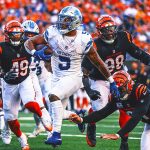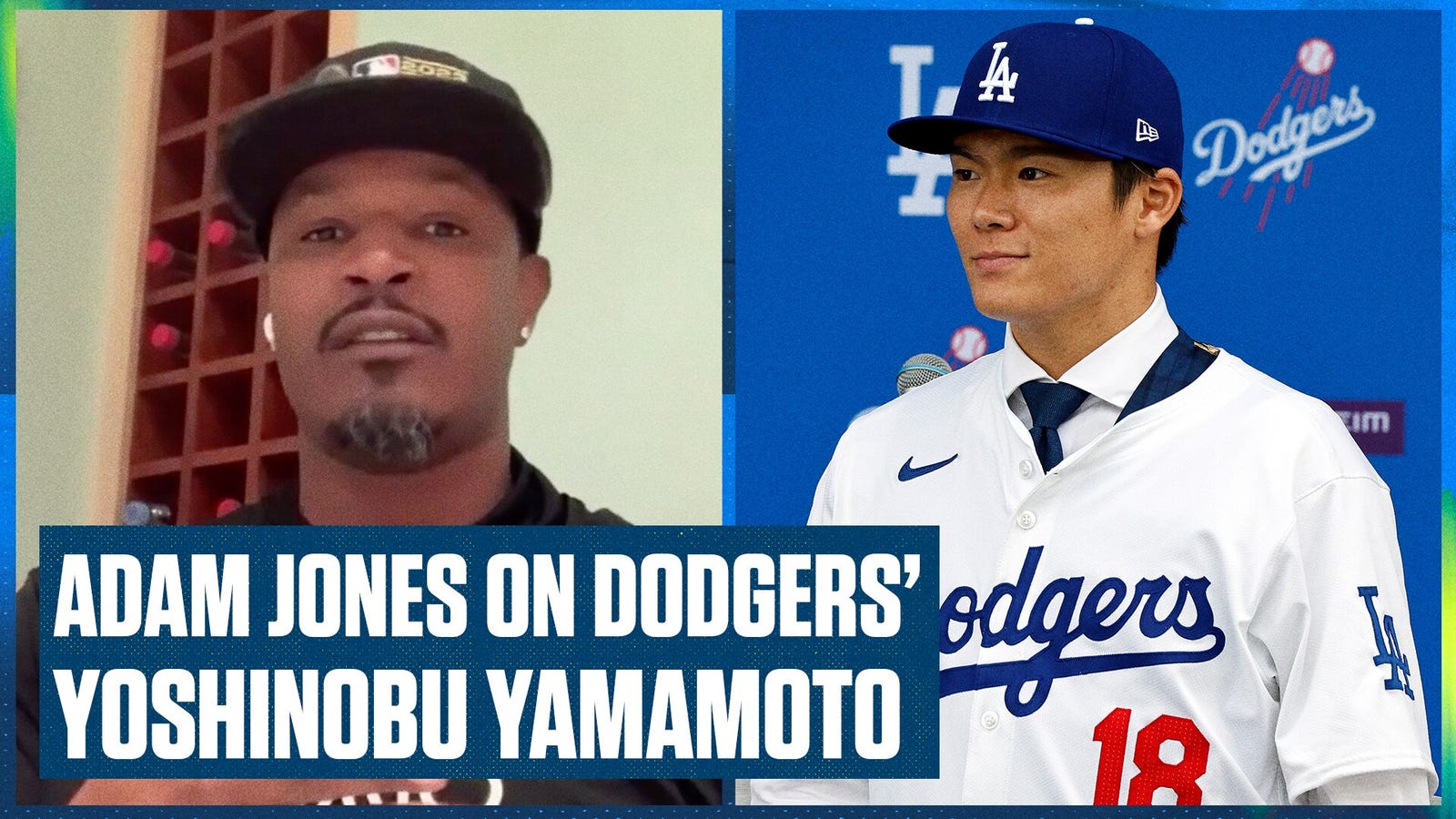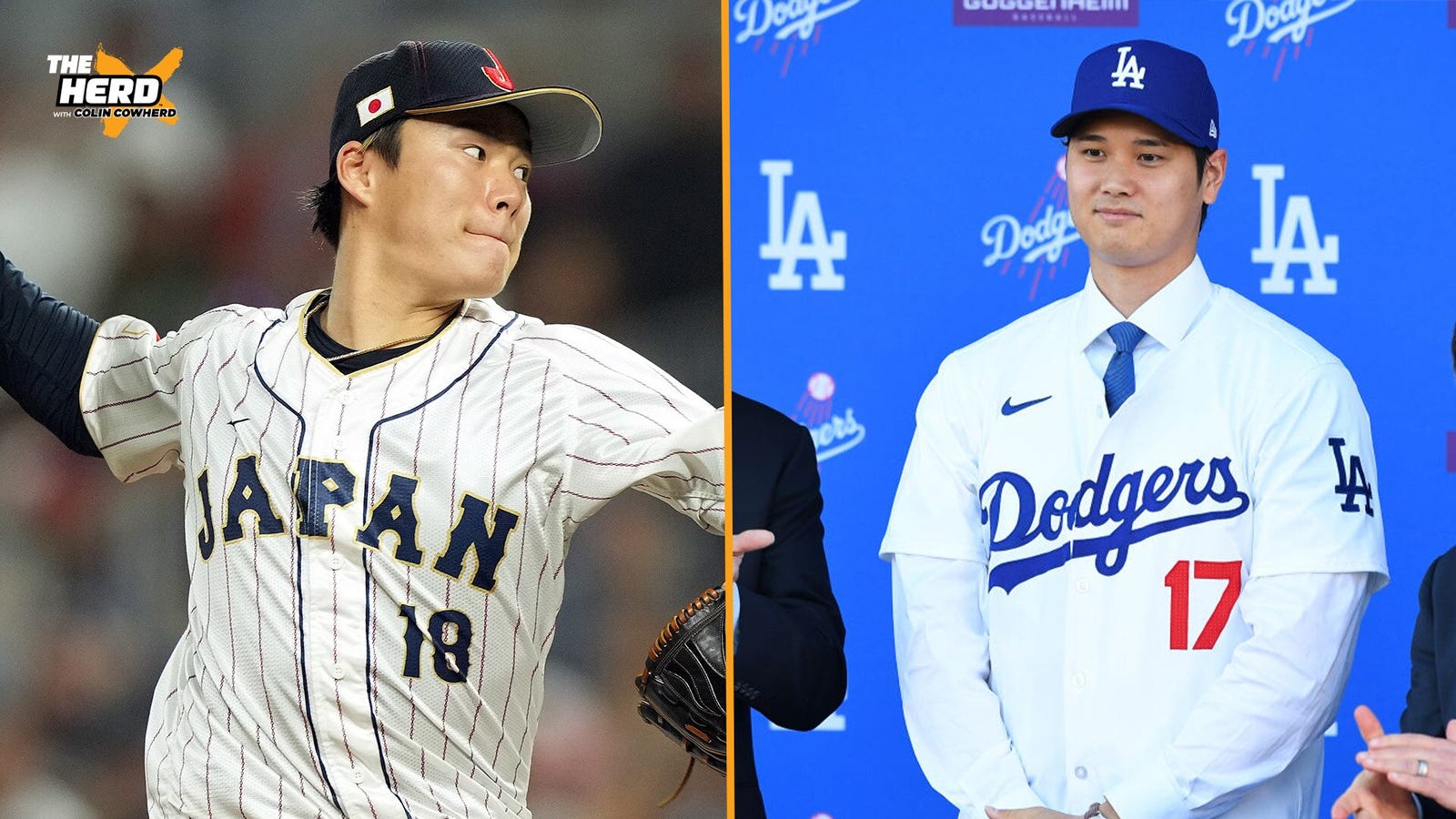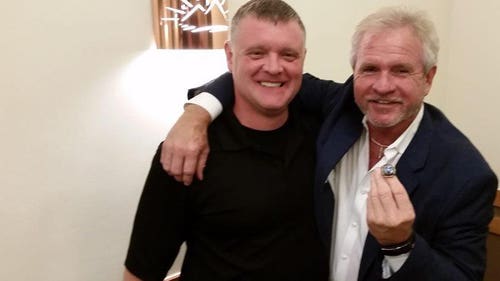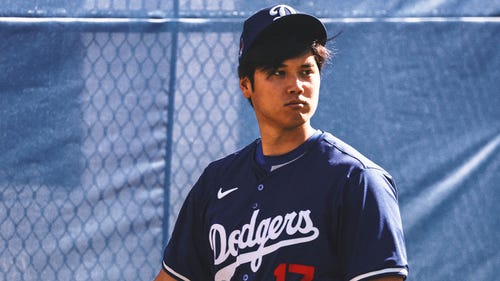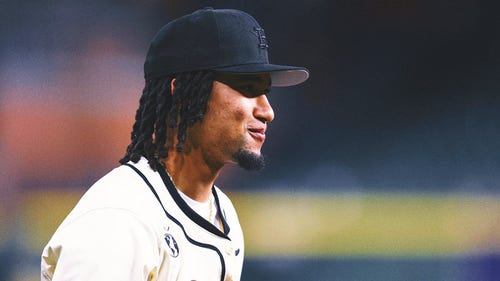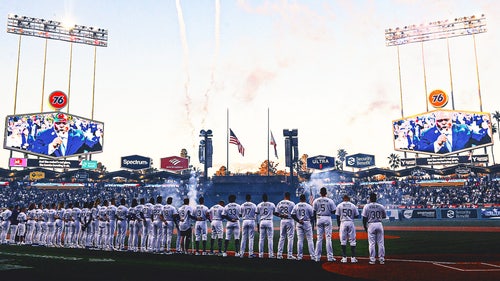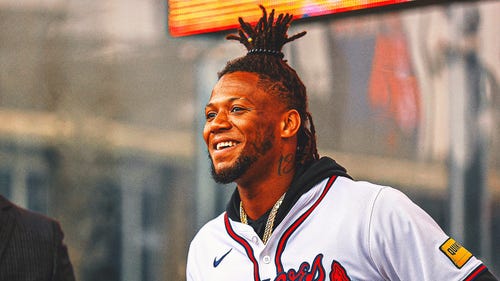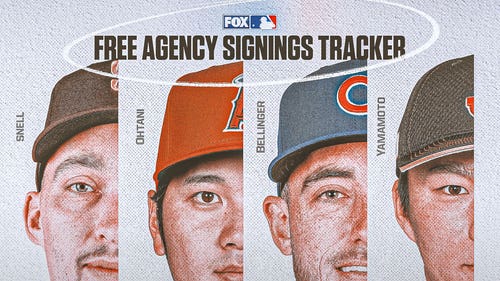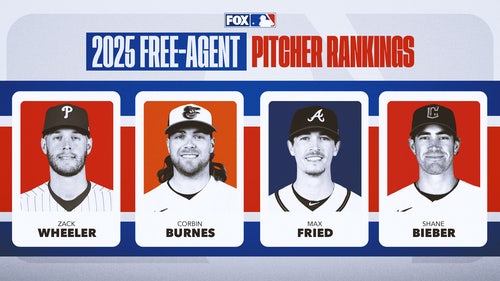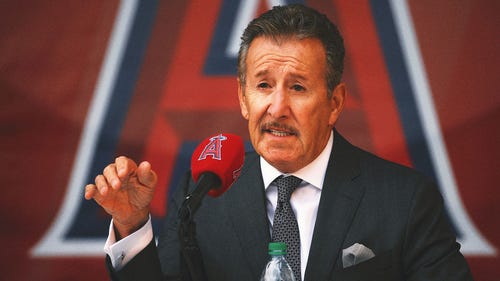Rowan Kavner
MLB Writer
GLENDALE, Ariz. — Freddie Freeman was going through his usual practice routine at 9:40 a.m. on Saturday when he peeked outside and noticed something unusual at the Dodgers‘ spring facility.
“I see javelins flying into the air,” Freeman recalled. “I’m like, ‘What is going on?'”
It’s a sight Freeman will eventually get accustomed to, the more he watches Yoshinobu Yamamoto’s distinctive workout routine. For now, though, Freeman is filled with wonder, whether Yamamoto has a javelin or a baseball in his hand, as he did later in the day pitching to his new Dodgers teammates for the first time.
They all walked away awestruck.
ADVERTISEMENT
“Crazy stuff,” Freeman said as he left the field, stupefied after facing Yamamoto for the first time.
After the session ended, Mookie Betts gave the Dodgers’ new ace a standing ovation and slapped his hand. One by one, each hitter that Yamamoto faced approached him to express some version of the same sentiment.
“I went up to him and said, ‘Please say incredible in Japanese, because that was incredible,'” Freeman said. “It was just very impressive, the whole package, the calmness to be able to execute when everyone’s watching you. It’s very, very impressive.”
Everything about Yamamoto’s first live batting practice was a spectacle.
As he warmed up in the bullpen, a group of more than 25 media members stood to one side with cameras in hand. Behind him, Dodgers assistant pitching coach Connor McGuiness observed each pitch that zipped into catcher Will Smith’s glove. Along the fence to Yamamoto’s other side were members of every Dodgers position group as well as front office staff and his agent. They all wanted a glimpse of the new $325 million man.
“I can’t even get a view of this guy,” a fellow starting pitcher said as he tried to get access to the fracas.
That view would become less impeded when Yamamoto took the field to face a medley of Dodgers hitters that included Freeman, Betts, Max Muncy, Jason Heyward, Austin Barnes and Manuel Margot. A drone flew overhead. A band played for the hundreds of fans in attendance, many of whom had their phones out to capture the first look of Yamamoto in action. He did not appear overwhelmed by the pomp and circumstance.
“I was really happy to throw in front of this many people because I hadn’t done it,” Yamamoto said through an interpreter. “I was happy.”
So were the teammates, coaches and the staff who convinced him to choose Los Angeles among his many suitors.
Despite never having thrown a pitch in a major-league game, Yamamoto received the largest contract ever given to a pitcher, in large part because of the command that helped the 25-year-old to three straight Triple Crowns and Sawamura Awards — the Nippon Professional Baseball equivalent of the Cy Young Award — in Japan. That’s what made Saturday feel like so much more than the typical live BP. It was the first chance for Dodgers players to see why teams were so intrigued.
Immediately, they understood.
Yamamoto wanted to use the session to check the height of his breaking ball and to see how he was locating. He featured a fastball in the mid-90s, a cutter, a splitter and a curveball specifically for right-handers.
“It’s 95-96 [mph], and today it was like 18-20 inches of vert, so it’s riding on you,” Freeman said. “And he doesn’t even have to throw that hard with the command he has. It’s just the command plus the stuff which makes him the most sought after guy. It makes a whole lot of sense. It’s just a great combination.”
It seemed like every batter he faced came away dazzled by something different.
Margot was impressed by the carry on Yamamoto’s fastball. Muncy noted how difficult it must have been for Yamamoto to perform so masterfully in this environment. Freeman couldn’t believe the pinpoint precision and deception from the 5-foot-10 righty.
Beyond his workout routine, Yamamoto operates differently from most pitchers once he’s on the mound, as well. A series of head-turns and pauses can be disorienting for the batter.
“It’s things you’re not used to facing,” Freeman said. “Then for him to put the ball where he wants and hit any quadrant, there’s just a lot of moving parts that a lot of guys are going to have trouble early on getting used to.”
Freeman saw a series of cutters, fastballs and splitters as Yamamoto’s pitches danced to different quadrants. The left-handed Heyward saw the same thing. Unlike Freeman, he chose not to swing, instead choosing to zero in on Yamamoto’s command. All five pitches Heyward got were knee-high, down in the zone.
None of the 28 pitches Yamamoto threw in the session were barreled. The hitters who did make contact got jammed or were late, sending foul balls every direction, causing spectators lined along the baselines to duck. Betts managed to poke a soft fly ball into short center that might have dropped for a hit in a regular game. Margot hit a grounder up the middle.
When they went up to Yamamoto afterward, they all shared the same message: “Nice pitch,” Yamamoto relayed in English.
“It was good for me to have the opportunity to face the actual hitters,” Yamamoto continued through his translator. “I think this is not the best yet, and I’m going to keep adjusting with what I need to, and it’s going to keep getting better.”
The Dodgers have expressed the utmost confidence that the skills Yamamoto demonstrated in Japan will translate to the majors. They believe he has the command, pitch mix, intelligence, curiosity and preparation needed to lead a staff, as evidenced by their 12-year commitment.
For now, it’s about making sure that transition is as smooth as possible. Little gestures matter. Slapping hands, bumping fists or going out to team dinners — Yamamoto’s translator, Hiro Sonoda, won a wing-eating competition earlier this week — can only help.
“Just wanting to help him feel welcome being somewhere completely far away from home,” Heyward said. “New surroundings, very easy to feel like you’re on an island by yourself. So I’m doing our best and my best to make sure he doesn’t feel that way. Naturally, it’s going to happen. We’re all human beings. We just want him to feel welcome.”
As he gets to know his new ace, manager Dave Roberts is picking up on cues that tell him that process is going well.
“He’s very regimented, which you would expect in his body preparation,” Roberts said. “His routine, as far as getting ready each day, is very methodical. The other part I think that he’s doing a great job of is getting comfortable in our environment with the Dodgers, and starting to learn players’ names. I think that’s a really important piece, too. I think that when you see Yoshi walk around, he’s very focused on his work, but he’s also smiling when he’s not working. And I think it just shows that he’s comfortable being here. That’s really important.”
Rowan Kavner covers the Dodgers and MLB as a whole for FOX Sports. He previously was the Dodgers’ editor of digital and print publications. Follow him on Twitter at @RowanKavner.
recommended

Get more from Major League Baseball Follow your favorites to get information about games, news and more

